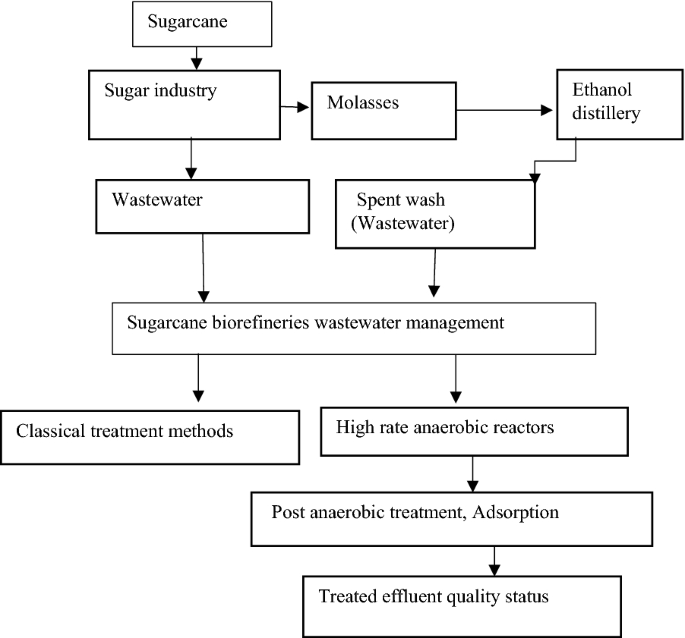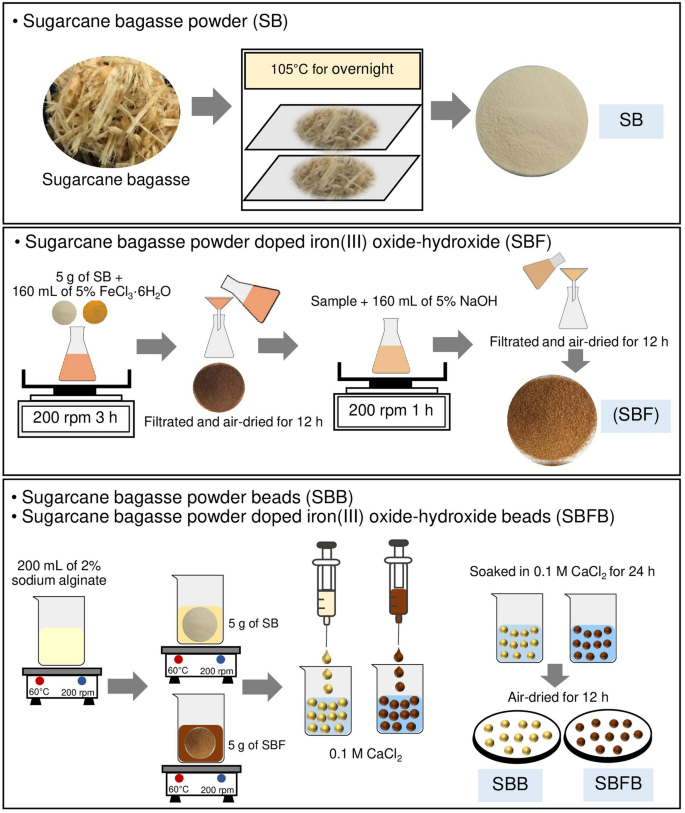Discover the Ingenious Advantages of Products From Sugarcane for Lasting Living
Sugarcane has emerged as a crucial source in the mission for lasting living. Its diverse applications cover eco-friendly product packaging, renewable resource, and much healthier food options. As industries seek environmentally friendly options, sugarcane's adaptability offers promising services. The real capacity of sugarcane prolongs beyond its existing usages. Exploring its ingenious benefits can expose brand-new paths towards an extra lasting future. What various other possibilities might this exceptional plant hold?

The Increase of Sugarcane as a Sustainable Source
As worldwide understanding of environmental problems expands, sugarcane has emerged as a popular lasting resource. This versatile crop offers a selection of advantages that contribute to environmentally friendly methods. Sugarcane is a renewable energy, with the ability of thriving in diverse environments while absorbing carbon dioxide, consequently mitigating greenhouse gas emissions. Its rapid development cycle permits frequent harvesting, resulting in a continuous supply of raw material.Additionally, sugarcane cultivation commonly needs much less water contrasted to various other crops, making it an efficient choice in water-scarce regions. The byproducts of sugarcane, such as bagasse and molasses, can be repurposed for various applications, lowering waste and promoting round economy principles. Furthermore, advancements in farming techniques have actually caused more sustainable farming techniques, additionally boosting sugarcane's environmental account. As customers significantly seek lasting options, sugarcane stands out as a sensible choice for those committed to minimizing their eco-friendly impact.
Biodegradable Product Packaging Solutions
How can eco-friendly product packaging solutions transform the way customers come close to sustainability? By utilizing sugarcane-based materials, these ingenious services supply an engaging choice to typical plastics. Eco-friendly packaging made from sugarcane decomposes normally, significantly lowering land fill waste and greenhouse gas discharges. As customers come to be progressively familiar with their ecological impact, the need for lasting product packaging proceeds to rise.These sugarcane-derived items not just serve practical functions but also align with eco-conscious customer worths. They provide a tangible means for people and organizations to contribute to a round economic climate, promoting resource efficiency and decreasing environmental footprints. In addition, as sectors take on biodegradable alternatives, they cultivate a society of sustainability that resonates with a growing demographic looking for accountable choices.In essence, biodegradable product packaging options from sugarcane represent an important advance in sustainable practices, empowering customers to make eco pleasant choices without sacrificing convenience or quality.
Renewable Power Generation From Sugarcane
A significant portion of renewable resource generation can be originated from sugarcane, showcasing its adaptability beyond conventional agricultural usages. Sugarcane biomass, consisting of bagasse and leaves, is a powerful resource for bioenergy manufacturing. This biomass can be transformed right into biofuels such as ethanol, which acts as a cleaner choice to nonrenewable fuel sources. In addition, the combustion of sugarcane results produces steam and power, supplying an energy source for sugar mills and nearby communities.The farming of sugarcane also adds to carbon sequestration, as the plants take in carbon dioxide throughout their development cycle. By using sugarcane for energy, waste is reduced, and lasting techniques are motivated. This renewable resource approach not only sustains power requirements yet also promotes rural advancement, creating jobs in bioenergy markets. On the whole, sugarcane attracts attention as a principal in the change to lasting energy options, lining up with international efforts to reduce carbon impacts.

Eco-Friendly Textiles and Fabrics
Green textiles and fabrics originated from sugarcane offer an encouraging option to traditional products. These eco-friendly choices not just reduce ecological influence yet also supply toughness and performance comparable to standard textiles. Sustainable manufacturing procedures additionally improve their charm, making them an indispensable component of a lasting way of living.
Naturally Degradable Material Options
Why is the modification toward naturally degradable material alternatives crucial for sustainable living? The enhancing understanding of ecological degradation has motivated a look for choices to traditional fabrics, which commonly contribute to pollution and waste. Naturally degradable fabrics, derived from renewable energies such as sugarcane, provide a promising service. These products decay naturally, lowering land fill buildup and lessening environmental effect. In addition, they can aid reduced carbon footprints and reliance on fossil gas. As customers come to be extra eco-conscious, the demand for lasting textiles grows, encouraging makers to invest and innovate in naturally degradable options. This modification not just supports sustainable practices but additionally promotes a round economy, leading the way for a much more accountable approach to fashion and textile manufacturing.
Sturdiness and Performance
Durability and efficiency are important factors when evaluating eco-friendly fabrics and materials. Sugarcane-derived products demonstrate outstanding strength and resilience, making them appropriate for numerous applications. These fabrics often display premium moisture-wicking buildings, which enhance comfort in day-to-day wear. In addition, their all-natural fibers add to breathability, ensuring that garments continue to be wearable and fresh also popular problems. The efficiency of sugarcane-based textiles prolongs to their resistance to tear and put on, enabling items to maintain their stability gradually. Moreover, these check my blog eco-friendly fabrics can be dealt with to boost UV security and discolor resistance, satisfying the functional demands of customers without jeopardizing sustainability. Eventually, sugarcane fabrics provide an unified balance of resilience and efficiency, attracting environmentally conscious people.
Sustainable Manufacturing Procedures
The impressive toughness and efficiency of sugarcane-derived textiles are enhanced by lasting manufacturing procedures that focus on ecological responsibility. These procedures make use of eco-friendly sources, decreasing dependence on fossil gas and reducing carbon footprints. By taking advantage of the by-products of sugarcane cultivation, producers can create environmentally friendly textiles while advertising waste decrease. Advanced techniques, such as water-efficient dyeing and naturally degradable treatments, further boost the sustainability of these textiles. Additionally, the usage of safe chemicals guarantees that the production process does not damage ecosystems or human health. This dedication to sustainability not just interest environmentally mindful consumers but likewise supports neighborhood economic situations by advertising lasting farming techniques. On the whole, sugarcane-derived fabrics represent a significant action towards a greener future in the apparel industry.
Sugarcane-Based Biofuels and Their Influence

Sugarcane-based biofuels have arised as a substantial alternative energy resource, providing a sustainable solution to the world's growing power demands. These biofuels, originated from the fermentation of sugarcane juice or molasses, provide an even more lasting option contrasted to nonrenewable fuel sources. Their production procedure creates reduced greenhouse gas emissions, adding to environment modification mitigation efforts.Additionally, sugarcane biofuels can boost power protection by diversifying energy sources and minimizing dependancy on imported oil. The growing of sugarcane likewise advertises country growth, producing jobs and boosting neighborhood economies.However, worries concerning land usage and food competitors persist, as boosted biofuel manufacturing might influence food supply chains. Sustainable agricultural techniques are important to balancing these making sure and competing rate of interests that biofuel manufacturing does not undermine food safety and security. On the whole, sugarcane-based biofuels stand for an encouraging opportunity for a greener energy future, supplied that their environmental and social ramifications are carefully taken care of.
Healthier Alternatives: Sugarcane in Food Products
While several customers seek much healthier alternatives in their diets, sugarcane products offer a nourishing option to fine-tuned sugars and sweetening agents. Stemmed from the natural extraction of sugarcane juice, these items retain crucial nutrients, including vitamins and minerals, that are usually lost in processed sugars. Sugarcane consists of anti-oxidants and dietary fiber, adding to general wellness and wellness.Many health-conscious people are transforming to sugarcane syrup and jaggery, which supply a lower glycemic index contrasted to conventional sugars, making them ideal for those taking care of blood sugar degrees. Furthermore, sugarcane-derived sweeteners can enhance the flavor of different recipes without the adverse results connected with man-made additives.This change towards natural artificial sweetener not only promotes much better dietary selections but additionally straightens with sustainable living techniques, as sugarcane is a renewable energy. Sugarcane products are arising as positive choices in the domain name of food items.
The Future of Sugarcane in Sustainable Innovations
The future of sugarcane is poised to encompass innovative applications that extend beyond typical uses. Its possible as a resource for biodegradable packaging remedies and renewable resource resources highlights its role in lasting techniques. Exploring these developments could significantly impact ecological preservation and resource administration.
Eco-friendly Product Packaging Solutions
An enhancing variety of business are turning to naturally degradable product packaging remedies stemmed from sugarcane as an encouraging choice to conventional plastics. These innovative products, typically made from sugarcane fibers and bioplastics, disintegrate normally, lowering the long-lasting ecological effect related to conventional plastic waste. By utilizing eco-friendly sources, sugarcane-based packaging adds to a more sustainable production cycle, lining up with international efforts to battle air pollution and environment modification. Additionally, these solutions commonly preserve the resilience and performance needed for numerous applications, from food containers to delivery products. As customer demand for eco-friendly options expands, businesses embracing sugarcane packaging not just enhance their brand picture but additionally play a pivotal role in fostering a round economy, paving the means for a greener future.
Renewable Resource Sources
Naturally degradable product packaging solutions are just one aspect of the broader capacity of sugarcane in advertising sustainability. Another significant application hinges on renewable resource sources. Sugarcane is a versatile plant that can be made use of to produce biofuels, such as ethanol, which works as a cleaner alternative to fossil fuels. The fermentation process of sugarcane juice yields ethanol that can power cars and produce electrical power. In addition, the byproducts of sugarcane handling, like bagasse, can be made use of to generate biomass power, supplying a sustainable and reliable technique to harness power. This twin role as both a resource of biofuel and biomass highlights sugarcane's potential in minimizing carbon emissions and sustaining a shift to important link an extra sustainable energy landscape in the future.
Regularly Asked Questions
Exactly How Is Sugarcane Gathered Sustainably?
Sugarcane harvesting can be sustainable via techniques like hands-on cutting, which lessens soil disturbance, and using equipment that minimizes fuel intake (Products From Sugarcane). Crop rotation and incorporated parasite monitoring additionally enhance ecological health and wellness and advertise long-lasting dirt fertility
What Are the Ecological Impacts of Sugarcane Farming?

Can Sugarcane Products Be Reused?
The inquiry of whether sugarcane products can be reused discloses a favorable overview. Many sugarcane-derived materials, such as bioplastics and product packaging, are designed for recyclability, adding to a much more sustainable waste management approach within ecological factors to consider.
Exist Any Drawbacks to Using Sugarcane-Based Products?
The disadvantages of using sugarcane-based items include potential land use competition with food crops, difficulties in large-scale production, and issues regarding the environmental effect of monoculture farming techniques, which can reduce biodiversity and soil health and wellness.
Exactly How Does Sugarcane Cultivation Affect Resident Communities?
Sugarcane farming impacts neighborhood neighborhoods by supplying employment possibility and increasing regional economic situations. It can also lead to land disagreements and environmental worries, affecting agricultural practices and area health, demanding a balanced approach to development. Advancements in farming practices have led to more lasting farming approaches, even more improving sugarcane's environmental account. Additionally, the combustion of sugarcane by-products produces vapor and power, providing a power source for sugar mills and neighboring communities.The growing of sugarcane additionally adds to carbon sequestration, as the plants soak up carbon dioxide during their development cycle. By making use of sugarcane for energy, waste is minimized, and sustainable techniques are urged - Products From Sugarcane. Sugarcane contains anti-oxidants and dietary fiber, adding to total wellness and wellness.Many health-conscious people are turning to sugarcane syrup and jaggery, which offer a reduced glycemic index compared to standard sugars, making them appropriate for those managing blood sugar degrees. Furthermore, the results of sugarcane processing, like bagasse, can be made use of to generate biomass energy, using a reliable and lasting method to harness energy